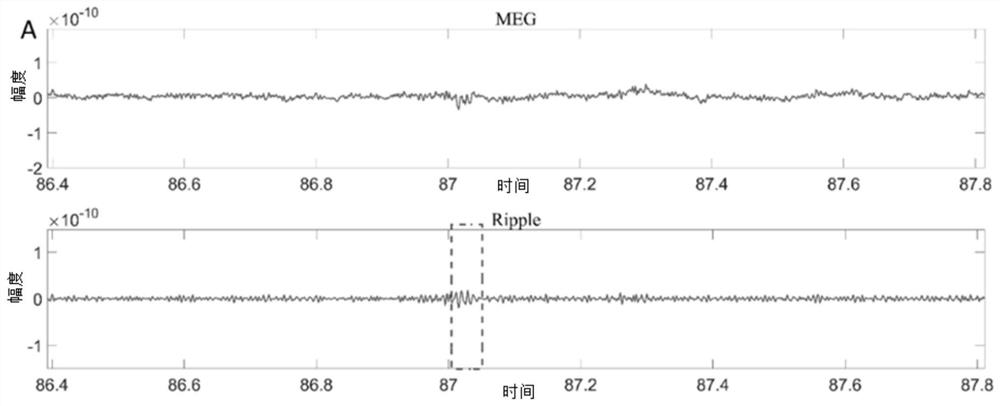Magnetoencephalogram source positioning method and device based on Tucker decomposition and ripple time window
A technology of magnetoencephalography and time window, applied in the field of biomedicine, can solve problems such as high computational complexity, positioning accuracy that cannot meet precise positioning, and lack of direct measurement
- Summary
- Abstract
- Description
- Claims
- Application Information
AI Technical Summary
Problems solved by technology
Method used
Image
Examples
Embodiment approach
[0046] see Figure 1-3 , figure 1 It is a schematic composition diagram of a magnetoencephalogram source location device based on Tucker decomposition and ripple time window according to a preferred embodiment of the present invention; figure 2 It is a schematic diagram of the detection result of the ripple time window according to a preferred embodiment of the present invention; image 3 It is a schematic diagram comparing the positioning accuracy of the Tucker decomposition based on the ripple time window and the positioning accuracy based on the spike-based dipole-fitting. According to a preferred embodiment of the present invention, see Figure 1-2 , provide a kind of magnetoencephalogram source localization device based on Tucker decomposition and ripple time window, it is characterized in that comprising:
[0047] The magnetoencephalogram sensor is used to obtain the first magnetoencephalogram signal of the user;
[0048] The ripple detection unit is used to detect ...
PUM
 Login to View More
Login to View More Abstract
Description
Claims
Application Information
 Login to View More
Login to View More - R&D
- Intellectual Property
- Life Sciences
- Materials
- Tech Scout
- Unparalleled Data Quality
- Higher Quality Content
- 60% Fewer Hallucinations
Browse by: Latest US Patents, China's latest patents, Technical Efficacy Thesaurus, Application Domain, Technology Topic, Popular Technical Reports.
© 2025 PatSnap. All rights reserved.Legal|Privacy policy|Modern Slavery Act Transparency Statement|Sitemap|About US| Contact US: help@patsnap.com



